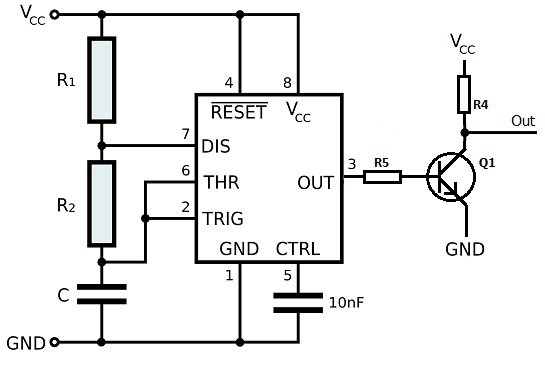The discrete transistorized astable and 555 astable circuit are about the same in complexity, so that's a wash. Here's the circuit for the 555 astable. Two resistors instead of four; both use two capacitors. But you've got the 555, and you'll need an inverter on the output as I'll explain later.
The trick is calculating the timing values. The easiest way is to use on-line calculators available on the web. There are a ton of these for the 555; I like this one best. But I only found one for the discrete circuit (scroll down to "2. Transistor Astable Oscillator (with unequal pulse width)". Try as I might, I couldn't find component values to come anywhere close to your timing requirements (1800 second period, 5 second on time) for the transistorized version of the astable.
However the gotcha with the 555 is the minimum duty cycle is 50%. To get a duty cycle lower than that, you need to use an inverter (such as an NPN transistor, or a 74LS04 gate if you need more drive) on the output.
Using the 555 astable calculator, and picking common valuescommon values for electrolytic capacitors and 1% resistors that are available:
C = 220 µF
R1 = 11.8 MΩ
R2 = 33.2 KΩ
You will end up with the following nominal values:
period = 1804 seconds (30.1 minutes)
off time = 5.0 seconds
duty cycle = 99.72%
which is very close to what you are looking for. However as brhans alludes to, the big problem is going to be the timing capacitor which has a ±20% tolerance. This means the timing could vary like this:
220-44 = 176 µF period = 1447 sec (24.1 min), off time = 4.0 sec
220+64 = 264 µF period = 2170 sec (36.2 min), off time = 6.0 sec
And this doesn't take into account variations in the resistor values, however they will be much less at ±1%. So you are going to have to accept the possibility of the timing values being quite a bit off, or fine tune your components, for example by a combination of two capacitors in parallel to get the desired value.

